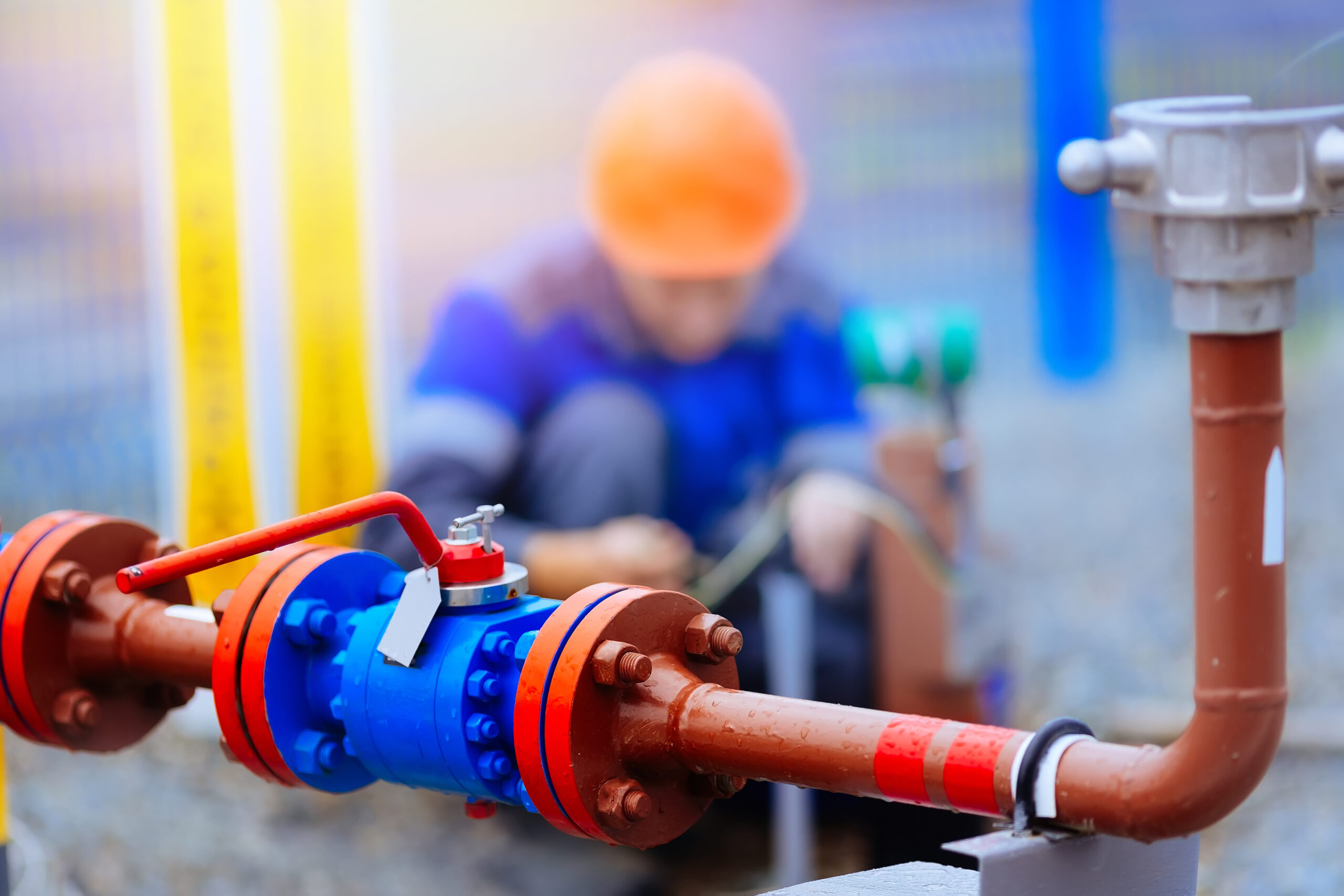Leak detection and management is one of the most critical functions for utility companies managing gas infrastructure. As regulatory pressure mounts and public expectations shift, utility operators face a new era where legacy leak survey workflows are struggling to keep up. While regulatory compliance remains the baseline, companies are seeing that modern tools, data and processes can transform leak management from a cyclical or reactive task to a proactive, strategic function that exceeds both customer and regulator expectations.
Demands Drive the Need for Modernization
Leak surveys are heavily manual efforts. Fieldworkers walk main lines and service lines with detectors and historically would record findings with paper-based tools. But as infrastructure ages and climate conditions evolve, that approach can’t keep up. These demands are driving the the need for high-quality, reliable data that improves workflows. . Plus, new technologies like AI and machine learning offer the promise of smarter prioritization but require complete and accurate data to achieve the needed results. Preparing for the future means selecting the right tools today that will enable the curation and maintenance of data that will fuel the operations of the future.
The shift to modernization isn’t just one decision—it’s a journey. It starts with going from paper to digital, then from manual to semi-automated, and eventually to fully data-driven decision-making. And with the right approach, utilities can exceed compliance, improve public safety and gain control over aging infrastructure challenges.
Historical Methods Struggle in the Context of Modern Challenges
Traditional leak survey and repair workflows are manual and error-prone, often relying on paper-based systems, spreadsheets, guesswork, multiple copies of data and inconsistent prioritization. Even with technological advancements, most leak survey processes today still fall into this category. Technicians may log findings manually in the field, only for those reports to be piled up back at the office, where work order generation waits for manual system entry of findings.
And any data updates linger on physical paper until it reaches the GIS or asset management teams, where manual interpretation happens weeks later, guessing what the technician meant with their notes. Not only is this labor-intensive, but it increases the risk of missed data, delayed repairs and regulatory non-compliance. This is critical for utilities, where a single piece of data can mean the prevention—or not—of a major incident.
Further complicating matters is the volume and variety of regulations utilities must navigate. Federal, state and local requirements often differ because they focus on different aspects and outcomes of the business. This means compliance is a specialized collection of requirements for each utility company (and each subsidiary), leading to a unique set of business rules defined for each organization. Plus, those are amplified by evolving environmental expectations, emissions regulations, and high-profile incidents that have driven a need for stricter oversight.
Beyond regulations and paperwork, the field conditions are demanding. Workers face extreme weather, hard-to-access asset locations, safety hazards and poor connectivity, all while needing to log accurate data and finish the job efficiently. Visibility and integration across the system is often limited, adding risk and uncertainty to their day. Add to this worker complacency from repeated tasks, fatigue, pressure to meet KPIs, and it all leads to increased risk of incidents.
These challenges, combined with rising customer expectations of faster response times and transparency, amplify the urgency to select the right tools that can streamline work, maintain data quality and prepare the organization for the future.
Jump-Start Modernization with the Lemur Mobile Mapping
Effectively modernizing leak management requires digitizing field work and integrating mobile asset mapping into a utility’s work and asset management (WAM) system. The right approach brings intelligence, context and accurate, relevant data into the hands of field teams. The right tools enable workers to replace paper-based workflows with a locationally-aware digital solution to identify, log, visualize, and address gas leaks and affected assets directly from the field.
Enter TRC’s Lemur mobile mapping software. Lemur combines with an organization’s WAM of choice to deliver a complete, integrated solution for fieldwork. Rather than relying on outdated spreadsheets or static maps, teams using Lemur can walk or drive survey routes, tagging leak locations with GPS precision and attaching relevant notes, sensor data, or images—all from their mobile device. Data is directly uploaded and accessible to office teams via the system of record, reducing lag time and enabling faster analysis and response.
Lemur also plays a pivotal role in improving data quality. On-device data validation ensures accurate, standardized inputs from the start—critical for compliance reporting and long-term asset management. This is because the business rules natively come with the software on the device.
As the data is created, validated and improved, it can be leveraged to build smarter workflows: flagging high-risk areas, optimizing work orders and generating insights to guide future surveys, all within days of collection since it’s reliable, validated and native to the systems in place. Then, as utilities adopt AI and machine learning, they can use this data to go beyond required frequency-based inspections and prioritize based on leak likelihood, historical performance, or even environmental conditions.
Lemur helps field and back-office teams work smarter. It’s built for real-world use—designed to work in low- or no-connectivity zones and ruggedized for techs. It reduces follow up trips and time on QC/QA field verification. Techs spend less time completing paperwork and sending off reports, emails and phone calls, and more time on the work itself—inspecting and maintaining assets.
The result is a streamlined, modern workflow that not only meets compliance standards and reduces OpEx, but also sets the stage for effective, data-driven leak survey and management.
Meet Regulations and Prepare for the AI Future
Transitioning to a mobile asset mapping solution like Lemur offers a cascade of benefits across organizations. It accelerates the identification and resolution of gas leaks, directly improving public safety and reducing operational risk. Real-time data validation eliminates delays in reporting and enables field teams to complete work in record time.
Operationally, Lemur brings consistency and structure to what has traditionally been a fragmented process. Standardized, high-quality data improves both regulatory reporting and internal communication. With unified asset mapping and contextual field data, repair crews are better prepared, reducing follow-up visits.
From a compliance standpoint, Lemur simplifies the task of meeting diverse and evolving federal, state and local reporting requirements. Data is accurate and up to date, meeting required business rules—making audits faster, more accurate and less stressful.
Plus, the accuracy and efficiency that Lemur brings sets utilities up to transition from reactive to proactive leak detection strategy. With a complete, accurate and unified dataset, utilities can start asking better questions:
- Where are we most vulnerable?
- How often should we survey this area—not just because we’re required to, but because the data suggests it’s wise?
Lemur plus the right WAM architecture is the foundation for predictive maintenance—and ultimately, for being better stewards of critical infrastructure.
Changing up the wording a touch so it reads different from above.
Improve Data to Achieve a Modern Proactive Leak Strategy
Leak surveys are no longer just a compliance checkbox—they’re a strategic opportunity. With tools like Lemur enabling digital, real-time asset mapping, utility companies can improve safety, reduce costs and stay ahead of evolving regulatory demands. The path forward is clear: digitize, optimize and lead with data.
And TRC can help. Our geospatial practitioners deliver reliable solutions that transform location data into usable insights. Our services meet each client’s unique needs, from strategic planning to systems integration, application development and field data collection to improve decision making across the entire enterprise. With Lemur and TRC, you can improve operations and infrastructure, increase resiliency and enhance performance.



